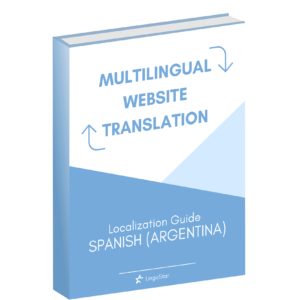Newsletter – May 2014
Dear language friend,
This month, we remember the 8th of May, the end of the Second World War. This day is called the Victory in Europe Day (VE Day) and is celebrated as a public holiday in several countries in Europe. The celebration’s date may vary according to the country. For instance, Italy’s Victory day is on April 25th and Denmark’s one is on May 5th. Now let’s remember what happened 75 years ago.
1939: the beginning of the war
In 1933, Adolf Hitler was governing Germany after having won the democratic elections. His political party (National Socialist German Workers’ Party) promoted anti-Semitic and colonialism propaganda, people admired his speeches and supported him in his quest to get all the German speakers united in one nation. In September 1939, he decided to invade Poland: France and Great Britain declared war on Germany. After several months without activity, called the Phoney War (the ‘sitting war’ in German and the ‘funny war’ in French), Germany attacked France. They arrived in Paris and made France capitulate in June 1940.
Until 1941 Great Britain fought alone. When the war globalized, in June, the USSR declared war on Germany after it had been invaded by the Wehrmacht (German Army). In December 1941, Japan attacked the American naval station in Pearl Harbour which caused the start of war in the United States. The war then turned global and fights were no longer just taking place in Europe.
The 1942 turn and the Allies’ response
With the involvement of new countries, 1942 would be the last year the Axis Power (Germany – Italy – Japan) would experience success. The Battle of Stalingrad where during one winter the Russian managed to protect the city and to defeat the Germans, their defeat would soon become a pattern.
In 1943, the Allies launched an offensive and gained ground in Africa and Italy. During the Washington (May) and Quebec (August) conferences, Roosevelt and Churchill decided on which day the French landing would be. It was carried out in 1944 in two operations, the first one called Overlord in Normandy and the other called Anvil in Provence 70 days later.
On January 11 the Overlord aerial preparation set out to destroy the German defence system. The Allies’ victory of submarine war allowed them to concentrate their operations out of England with more than 3.5 million soldiers and 20 tons of war equipment at their disposal. The Overlord operation that involved 4 500 ships and 13 000 planes made History.
During 1943, countries under German control were suffering. With the several defeats, the brutality increased. This repression was mounted by Himmler and targeted the physical liquidation of Jewish people in the extermination camps. Other ‘special’ actions were taken as reprisals to spread terror among the occupied population: after the Warsaw Ghetto uprising, the Germans savagely destroyed the ghetto and burned the building and its’ occupiers. A second example is the French massacre in Oradour-Sur-Glane, where 600 people were killed by the SS as reprisals of the French resistance.
The Europe’s liberation: June 1944-February 1945
On 1944, May 6th, the Allies were unloading in Normandy where they surprised the German defences of the Atlantic Wall. The battle was won by the 11th, the Allies then progressed through the lands. Paris, which rose against the Germans on August 19th, would welcome the liberation troops on the 24th.
The Germans little by little lost ground with the Allies on their west boundaries and the Red Army on the east. During the Yalta Conference (February 1945), Stalin, Roosevelt and Churchill decided which strategies should be used for the launch of the final assault.
On the west, American, British, French and Canadian troops repelled Germans and gained ground in Germany. At the same, on the east side, the Red Army penetrated Hungary, Austria and finally reached Berlin on May 2nd. After Hitler’s suicide, the German army capitulates on May 4th. The war kept going on in the Pacific until September 2nd and the Japanese capitulation.
The ‘Peace’ time
If summer 1945 marked the end of the war, it is hard to say that it was synonymous with peace. Indeed, tensions rose because of the decisions that had to be taken about Germany and the new organization of Europe. Stalin took advantage of his presence in the Eastern countries to govern them. Little by little, an Iron Curtain (expression created by Winston Churchill) appeared, separating the USSR and American allies.
The war in figures
It is still hard to estimate the exact amount of losses during WWII. We estimate that there were between 40 and 50 million victims (by comparison, today the Canadian population is around 34 million people). For WWI, the majority of the deceased were soldiers, which is quite different with WWII where there are as many civilians deceased as soldiers. This high proportion of civilians is due to the particular nature of the conflict: generalization of aerial bombings, famine, reprisals, but above all the physical liquidation of millions of Jewish people, prisoners and other people by the Nazis.
Canada’s role in WWII
Canada entered WWII on 10th September 1939. Canada’s main role was to defend the British Isles. Small forces of Canadians also went to Hong Kong to fight the Japanese invasion with the British, Indian and Hong Kong forces until the surrender on Christmas Day 1941. In 1942, Canadian troops formed the bulk of the Dieppe Raid. Of the 5,000 Canadians who took part, nearly 1,000 had been killed and 2,000 taken prisoner. Canadians troops landed in Normandy on the 6th of June 1944 as part of the Allied invasion force and they played an important role in the battle to take Caen. Canadian contributions have also been made by sea and by air. It is estimated that more than 37,000 Canadians died during the 1939-1945 war.
Here at LingoStar, we cooperate with highly professional translators and interpreters who can help you. Do you need to apply for citizenship and have immigration-related documents to be translated? No problem, LingoStar is at your service – from website translation, to voice-overs, to subtitle translation, and to translation of almost any type of document. Feel free to give us a call at 604-629-8420 or email us at info@lingo-star.com to discuss your next language-related project. Don’t hesitate: we’re here to help!

















Nice and interesting article!! Good job guys! 🙂